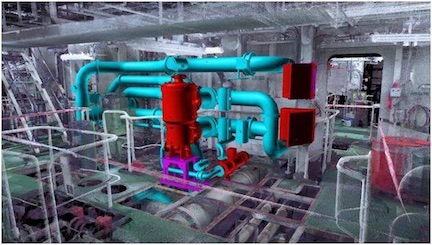Goltens Green Technologies is supporting the world-wide effort to design and install ballast water treatment systems that could be deployed on as many as 60,000 vessels world-wide.

The International Maritime Organization (IMO) is implementing ballast water treatment rules for ships because: “Ballast water may be taken onboard by ships for stability and can contain thousands of aquatic or marine microbes, plants and animals, which are then carried across the globe. Untreated ballast water released at the ship’s destination could potentially introduce a new invasive marine species. Hundreds of such invasions have already taken place, sometimes with devastating consequences for the local ecosystem.
The International Convention for the Control and Management of Ships’ Ballast Water and Sediments (BWM Convention) was adopted in 2004 to introduce global regulations to control the transfer of potentially invasive species. With the treaty now in force, ships need to manage their ballast water.”
The BWM Convention entered into force on 8 September 2017. Under the Convention, all ships in international traffic are required to manage their ballast water and sediments to a certain standard, according to a ship-specific ballast water management plan. New ships also must meet the ballast water treatment standard.
Willem Visscher, a Goltens manager based in the Netherlands, has been working with shipowners, engineers and contractors to laser scan engine rooms and develop engineering drawings so that shipowners can decide on appropriate water treatment systems for their vessels.
In 2018, Visscher said that Goltens provided designs and engineering for 120 vessels.
Goltens has designed systems for Maersk mega container ships and for many bulk carriers.
Visscher said that about 60,000 vessels will need to deploy new ballast water treatment systems and that new installations are averaging about 1,000 systems per month.
Primarily, the installations occur when the ship goes to drydock for scheduled inspections and repairs.
Visscher said that in the case of new vessels, the water treatment systems are merely added to the design of the new engine room.
In the case of existing ocean-going vessels, Goltens has been able to design and deploy systems that in almost 90 percent of cases “can be moved through the passageways and via hatches without cutting into the ship.”
Visscher added that in 90% of those cases Goltens designers figured out how to place the new system in the engine room without major changes to existing systems and piping.
Goltens uses a laser scanner in the engine room supported by a 3 D camera to work with owners to find the best location for the BW system to be placed. This requires minimum disruption to the operation of the engine room.
The results of the scan are fed into a 3D computer-aided drafting (CAD) program to model shortlisted systems into the existing space on vessels.
Once a decision is made as to location, then the owners will select a supplier to build the system.
Visscher says that there are several technologies that will kill bacteria and ensure that ballast water discharged in a port will not contain harmful bacteria that will threaten the local marine life:
•Ultra Violet systems
*Electrical systems
*Chemical systems such as using chlorine.
The company has designed systems that will filter water at a rate of 50 cubic meters of water an hour to the largest system that processed 6,000 cubic meters of water per hour.
Generally, the Goltens team will complete the engine room mapping in one day, get a concept for owner approval in 2-4 weeks, followed by engineering drawings in 6-12 weeks and facilitate the deployment of the BW within 9 months, Visscher said.
He added variables include the owner’s research and due diligence of BW options. A second variable is the BW suppliers ability to provide components for assembly and deployment in a timely manner during the ship’s drydocking.
Goltens takes no role in deciding what system an owner purchases.
“For Goltens, the best reward is knowing that we are supporting new technology that reduces the spread of invasive species that threaten the marine life of oceans and seas around the world and will allow for the regeneration of natural marine life,” Visscher said.

